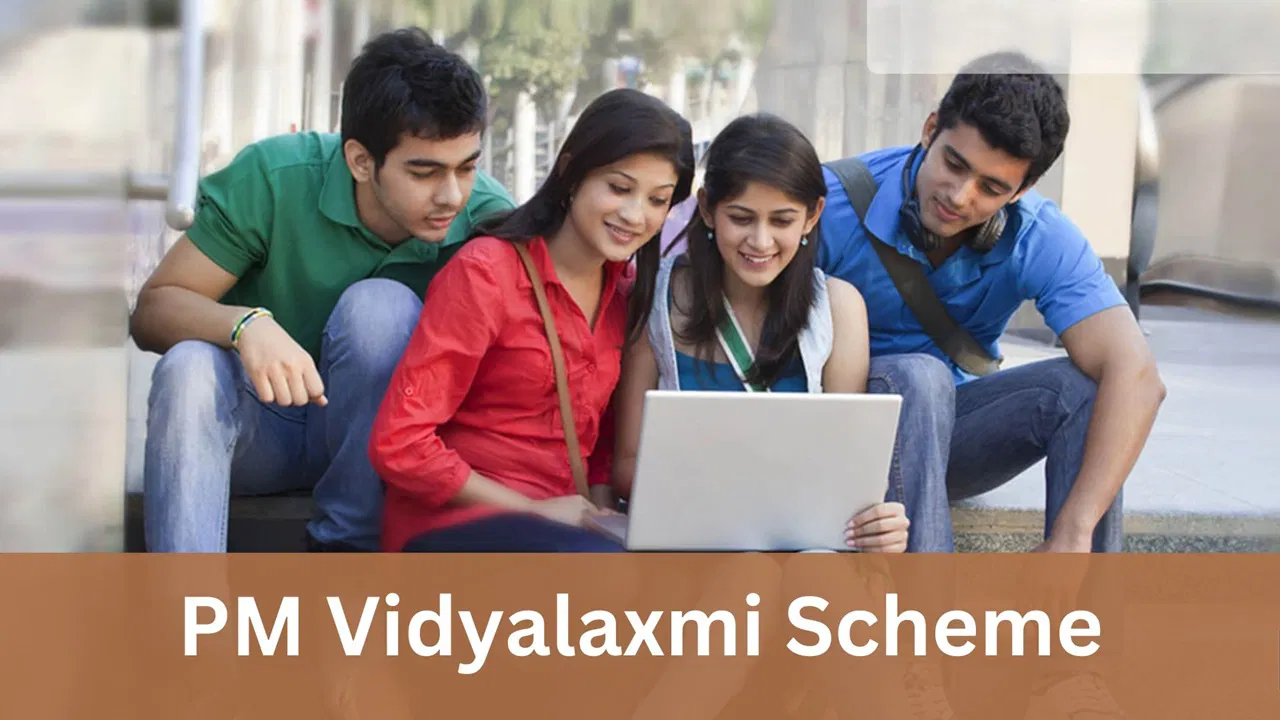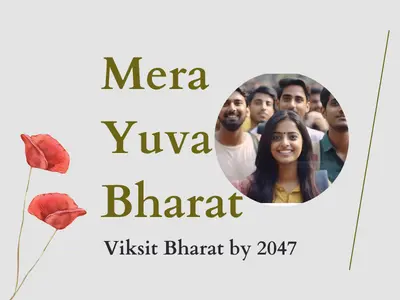Table of Contents
TogglePM Vidyalaxmi: A New Initiative to Support Meritorious Students
The Union Cabinet, led by Prime Minister Shri Narendra Modi, has given the green light to PM Vidyalaxmi, a new Central Sector scheme designed to provide financial support to meritorious students, ensuring that financial constraints do not hinder anyone from pursuing higher education. This initiative is a key component of the National Education Policy, 2020, which advocates for financial assistance to be made available to deserving students through various measures in both public and private Higher Education Institutions (HEIs).
Under the PM Vidyalaxmi scheme, students who gain admission to Quality Higher Education Institutions (QHEIs) will be eligible for collateral-free, guarantor-free loans from banks and financial institutions to cover the full cost of tuition and other related expenses. The scheme will be managed through a simple, transparent, and student-friendly system that is fully digital and interoperable.
The scheme applies to top-tier higher educational institutions in the country, as determined by the NIRF rankings. This includes all HEIs, both government and private, ranked within the top 100 in overall, category-specific, and domain-specific rankings; state government HEIs ranked between 101-200 in NIRF; and all central government institutions. The list will be updated annually based on the latest NIRF rankings, starting with 860 qualifying QHEIs, potentially benefiting over 22 lakh students.
For loan amounts up to ₹7.5 lakhs, students will also be eligible for a credit guarantee covering 75% of the outstanding default, supporting banks in providing education loans under the scheme.
Additionally, students with an annual family income of up to ₹8 lakhs, who are not eligible for other government scholarships or interest subvention schemes, will receive a 3% interest subvention on loans up to ₹10 lakhs during the moratorium period. This interest subvention will be provided to one lakh students annually, with preference given to those from government institutions and those pursuing technical or professional courses. An allocation of ₹3,600 Crore has been made for the period 2024-25 to 2030-31, with an estimated 7 lakh new students expected to benefit from this interest subvention.
The Department of Higher Education will establish a unified portal, “PM-Vidyalaxmi,” where students can apply for education loans and interest subvention through a simplified application process used by all banks. Payments for interest subvention will be made through E-vouchers and Central Bank Digital Currency (CBDC) wallets.
PM Vidyalaxmi aims to build on and expand the scope of the Government of India’s initiatives in education and financial inclusion over the past decade, maximizing access to quality higher education for India’s youth. This scheme will complement the Central Sector Interest Subsidy (CSIS) and Credit Guarantee Fund Scheme for Education Loans (CGFSEL), components of PM-USP, implemented by the Department of Higher Education.
Under PM-USP CSIS, students with an annual family income of up to ₹4.5 lakhs pursuing technical or professional courses from approved institutions receive full interest subvention during the moratorium period for education loans up to ₹10 lakhs. Together, PM Vidyalaxmi and PM-USP will provide comprehensive support to deserving students pursuing higher education in quality HEIs and technical or professional education in approved HEIs.

PM Vidyalaxmi Scheme Eligibility
The PM Vidyalaxmi scheme is designed to provide financial support to meritorious students, ensuring that financial constraints do not hinder their pursuit of higher education. Here are the key eligibility criteria for the scheme:
Admission to Quality Higher Education Institutions (QHEIs)
Eligibility. Any student who gains admission to a Quality Higher Education Institution (QHEI) is eligible for the PM Vidyalaxmi scheme. These institutions are determined based on the National Institutional Ranking Framework (NIRF) rankings.
Institutions Covered: The scheme applies to all government and private HEIs ranked within the top 100 in overall, category-specific, and domain-specific NIRF rankings. It also includes state government HEIs ranked between 101-200 in NIRF and all central government-governed institutions.
Collateral-Free and Guarantor-Free Loans
Loan Coverage: Eligible students can receive collateral-free and guarantor-free loans from banks and financial institutions to cover the full amount of tuition fees and other course-related expenses.
Credit Guarantee
Loan Amount: For loan amounts up to ₹7.5 lakhs, students are eligible for a credit guarantee covering 75% of the outstanding default. This support helps banks expand coverage for students under the scheme.
Interest Subvention
Income Criteria: Students with an annual family income of up to ₹8 lakhs, who are not eligible for other government scholarships or interest subvention schemes, can receive a 3% interest subvention on loans up to ₹10 lakhs during the moratorium period.
Preference: Preference is given to students from government institutions and those pursuing technical or professional courses.
Application Process
Unified Portal: The Department of Higher Education will establish a unified portal, “PM-Vidyalaxmi,” where students can apply for education loans and interest subvention through a simplified application process accessible to all banks.
Digital Payments: Payments for interest subvention will be made through E-vouchers and Central Bank Digital Currency (CBDC) wallets.
Why the PM Vidyalaxmi Scheme Was Required
The PM Vidyalaxmi scheme was introduced to address several critical issues in the Indian education system and ensure that financial constraints do not prevent meritorious students from pursuing higher education. Here are the key reasons why this scheme was necessary:
Financial Barriers to Higher Education
High Costs: The cost of higher education, including tuition fees, accommodation, and other related expenses, can be prohibitively high for many families. This financial burden often prevents deserving students from enrolling in quality higher education institutions (QHEIs).
Solution: The PM Vidyalaxmi scheme provides collateral-free and guarantor-free loans to cover the full cost of tuition and other expenses, making higher education more accessible to students from all economic backgrounds.
Limited Access to Financial Assistance
Existing Gaps: While there are various scholarships and financial aid programs available, many students still fall through the cracks due to stringent eligibility criteria or limited coverage.
Solution: The PM Vidyalaxmi scheme aims to fill these gaps by offering a comprehensive financial support system that includes credit guarantees and interest subvention, ensuring that more students can benefit from financial assistance.
Encouraging Merit-Based Education
Merit Recognition: Many talented and hardworking students are unable to pursue higher education due to financial constraints, leading to a loss of potential talent and innovation.
Solution: By providing financial support to meritorious students, the PM Vidyalaxmi scheme encourages academic excellence and ensures that deserving students have the opportunity to achieve their educational goals.
Promoting Inclusivity and Equality
Socio-Economic Disparities: Socio-economic disparities often result in unequal access to education, with students from disadvantaged backgrounds facing significant barriers.
Solution: The scheme promotes inclusivity and equality by offering financial support to students from diverse socio-economic backgrounds, helping to bridge the gap and create a more equitable education system.
Supporting Technical and Professional Education
Skill Development: Technical and professional education is crucial for developing a skilled workforce that can contribute to the country’s economic growth and development.
Solution: The PM Vidyalaxmi scheme gives preference to students pursuing technical and professional courses, ensuring that they receive the necessary financial support to complete their education and enter the workforce.
Enhancing Digital and Financial Inclusion
Digital Transformation: The scheme’s fully digital and interoperable system simplifies the application process and ensures transparency, making it easier for students to access financial support.
Solution: By leveraging digital technology, the PM Vidyalaxmi scheme enhances financial inclusion and ensures that students from all regions can benefit from the scheme.
Impact of the PM Vidyalaxmi Scheme
The PM Vidyalaxmi scheme is poised to have a significant impact on the Indian education system and society at large. Here are some of the key anticipated impacts:
Increased Access to Higher Education
Financial Support: By providing collateral-free and guarantor-free loans, the scheme will make higher education more accessible to students from diverse economic backgrounds. This will enable more students to pursue their academic goals without financial constraints.
Inclusivity: The scheme promotes inclusivity by offering financial assistance to students from disadvantaged backgrounds, ensuring that socio-economic disparities do not hinder educational opportunities.
Encouragement of Merit-Based Education
Recognition of Talent: The scheme will encourage academic excellence by providing financial support to meritorious students. This recognition of talent will motivate students to strive for higher academic achievements.
Support for Technical and Professional Education: By giving preference to students pursuing technical and professional courses, the scheme will contribute to the development of a skilled workforce, essential for the country’s economic growth.
Enhanced Financial and Digital Inclusion
Digital Transformation: The fully digital and interoperable system of the PM Vidyalaxmi scheme will simplify the application process and ensure transparency. This digital transformation will enhance financial inclusion and make it easier for students to access financial support.
Financial Literacy: The scheme will also promote financial literacy among students, as they navigate the process of applying for loans and managing their finances.
Strengthening of Higher Education Institutions
Quality Education: By focusing on Quality Higher Education Institutions (QHEIs), the scheme will ensure that students receive education from top-tier institutions. This emphasis on quality will enhance the overall standard of higher education in the country.
Institutional Support: The scheme will provide financial stability to higher education institutions by ensuring a steady flow of students who can afford their education through loans.
Economic Growth and Development
Skilled Workforce: By supporting students in technical and professional courses, the scheme will contribute to the creation of a skilled workforce. This will have a positive impact on the country’s economic growth and development.
Innovation and Research: Increased access to higher education will foster innovation and research, driving advancements in various fields and contributing to the nation’s progress.
Social Impact
Empowerment of Youth: The scheme will empower the youth by providing them with the necessary financial support to pursue their educational aspirations. This empowerment will lead to a more educated and capable generation.
Reduction in Dropout Rates: Financial support will reduce dropout rates among students who might otherwise be unable to continue their education due to financial constraints.




One thought on “PM Vidyalaxmi Scheme: Check who is eligible for financial support scheme”